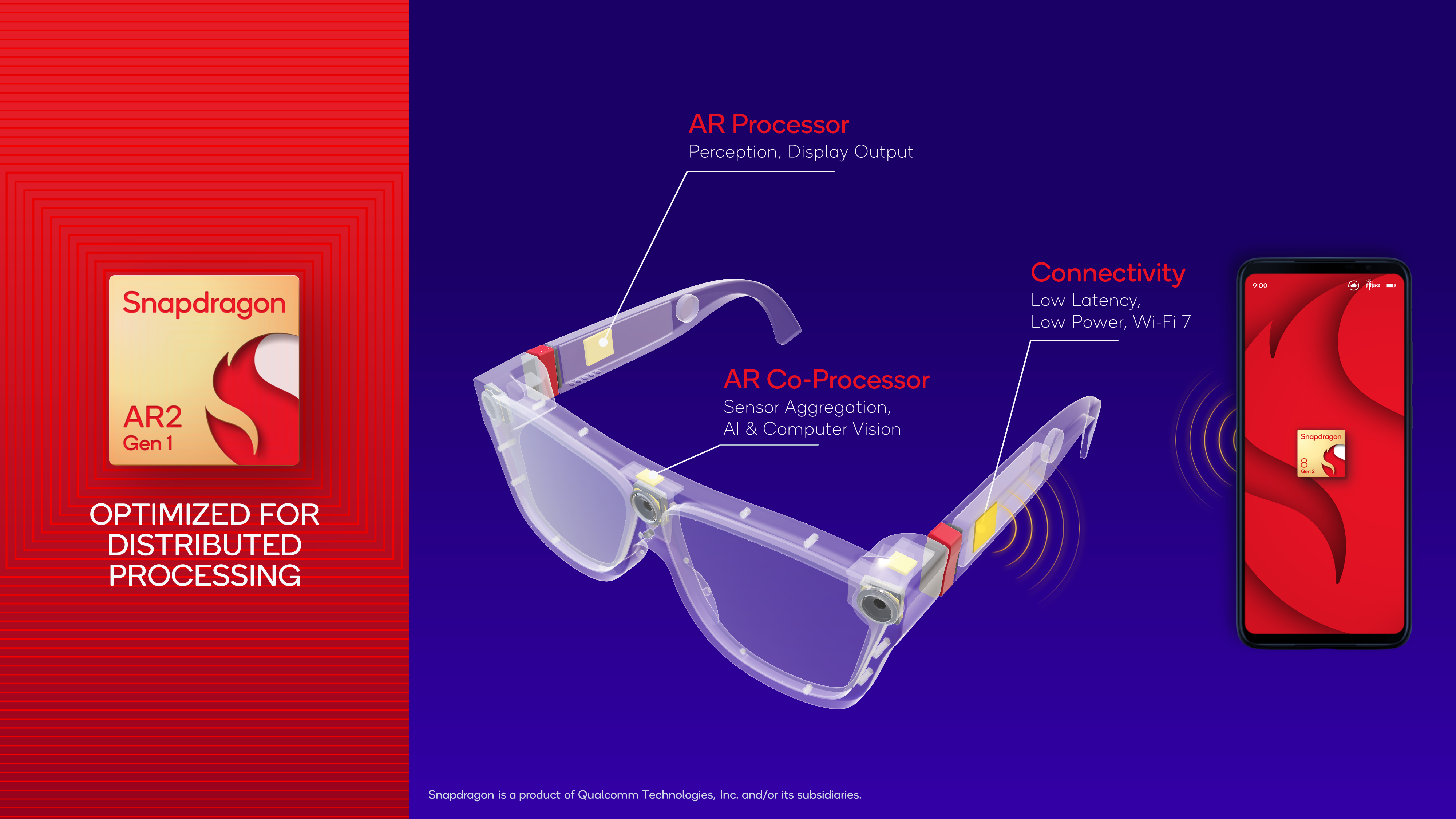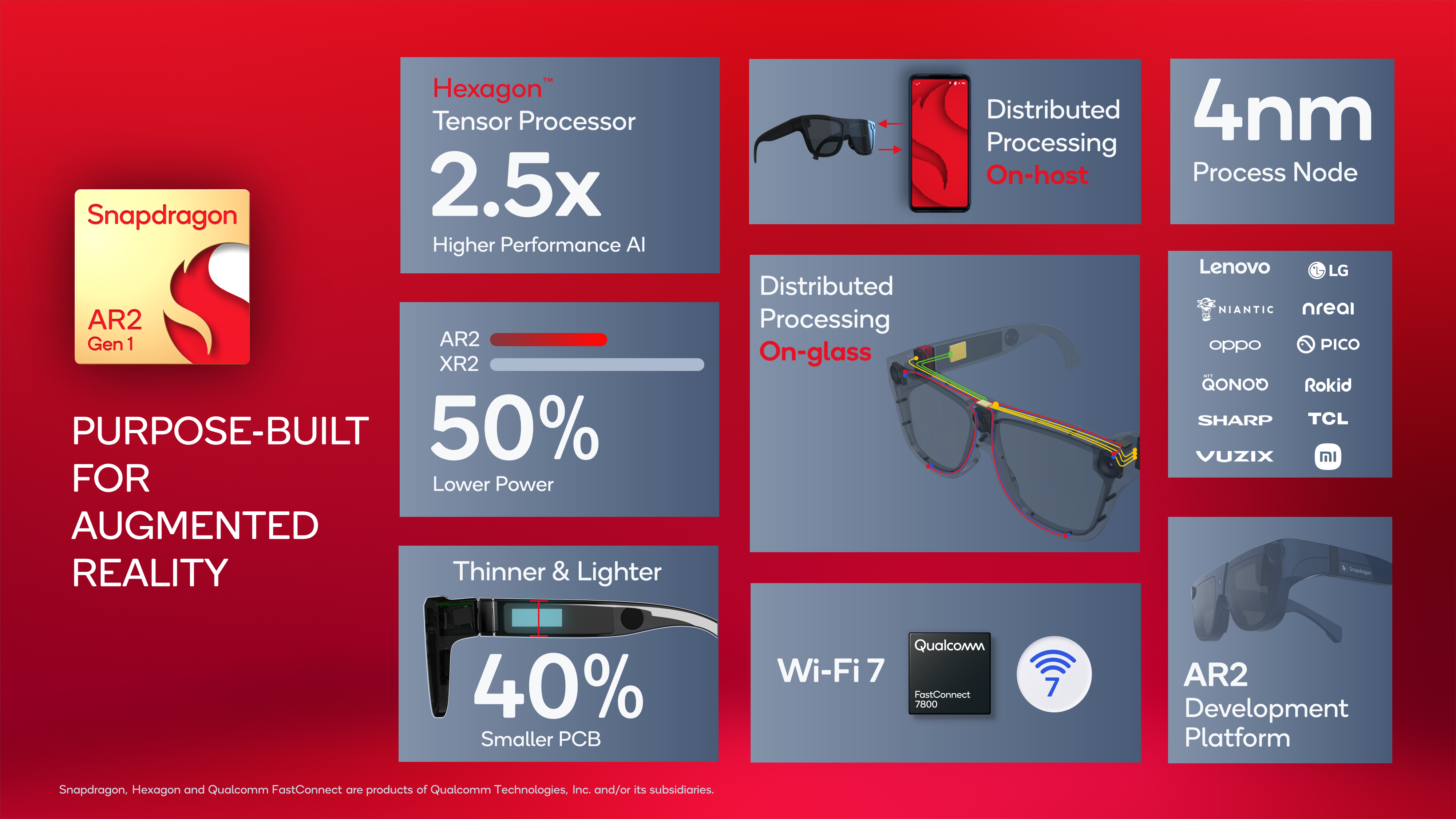Day two of chip maker Qualcomm's annual Snapdragon Summit played host to the reveal of the Snapdragon AR2 Gen 1 – the company's first dedicated augmented reality chipset – designed to better serve AR experiences through smart glasses and other similar headworn wearables.
Qualcomm already has a well-established presence in the XR (virtual reality / VR, mixed reality / MR and augmented reality / AR) space, with the Meta Quest 2 and Pico 4 notably running on the company's recent XR2 platform, while Meta's fresh-faced Quest Pro headset – which lightly dabbles in mixed reality thanks to its full-color passthrough support – is one of the first headsets to run on Qualcomm's enhanced XR2 Plus chipset. The experiences and devices the AR2 Gen 1 is designed to support are slightly different, however.
Up until now, even existing Qualcomm-powered augmented reality wearables, such as Microsoft's HoloLens 2, have had their size and form dictated, in part, by the size and power demands of the current chipsets they're running on. Despite approaching a look that more accurately matches conventional everyday sunglasses, even the company's own Snapdragon XR1-powered AR reference design comes with chunky arms and unusual proportions in order to fit the XR1 chipset inside of it.
Despite the somewhat confusing name, the newly-unveiled Snapdragon AR2 Gen 1 is Qualcomm's first attempt at a dedicated AR platform to better suit the form factor of augmented reality glasses that science fiction has promised us; a headworn AR system that doesn't have to compromise on the dimensions of conventional sunglasses in the way previous attempts have, while also serving up better connectivity and lower latency experiences than previous devices.

Rather than having to fit a single SoC into the bridge or arms of a pair of smart glasses, three elements of the AR2 Gen 1 are separated out, to reduce the overall footprint of the platform; making it easier to fit into a wider array of form factors.
Compared to the XR2, the AR2 Gen 1 boasts a 40% smaller PCB and 45% less wiring, with the new reference design Qualcomm showed off during the Summit placing the main AR processor in one arm, the connectivity module in the other and the AR co-processor in the bridge.
Analysis: the right tool for the job

With heavier computing offloaded to a supporting device (like a smartphone), the AR2 Gen 1's hardware can instead focus on delivering a faster and more responsive experience, punctuated by the same new FastConnect 7800 WiFi module found inside the company's newly-announced Snapdragon 8 Gen 2 mobile chip, serving up cutting-edge WiFi 7 speeds with a sub 2ms latency.
What's more, this focused approach means the AR2 Gen 1 also serves up 50% less power consumption and 2.5x better AI performance, compared to XR2 when it comes to tasks like object recognition and hand tracking.
Companies like LG, Nreal, Oppo, Pico, TCL and Xiaomi have already committed to creating their own AR devices running on the AR2 Gen 1, with the potential for hardware supported 6DoF tracking, eye tracking and a number of other great AR features expected to appear on this next wave of devices.
Until these slimmer, sleeker, more responsive AR2 Gen 1 smart glasses make their way to market, however, check out or rundown of the best VR headsets that you can (and should) buy, right now.
Source: TechRadar